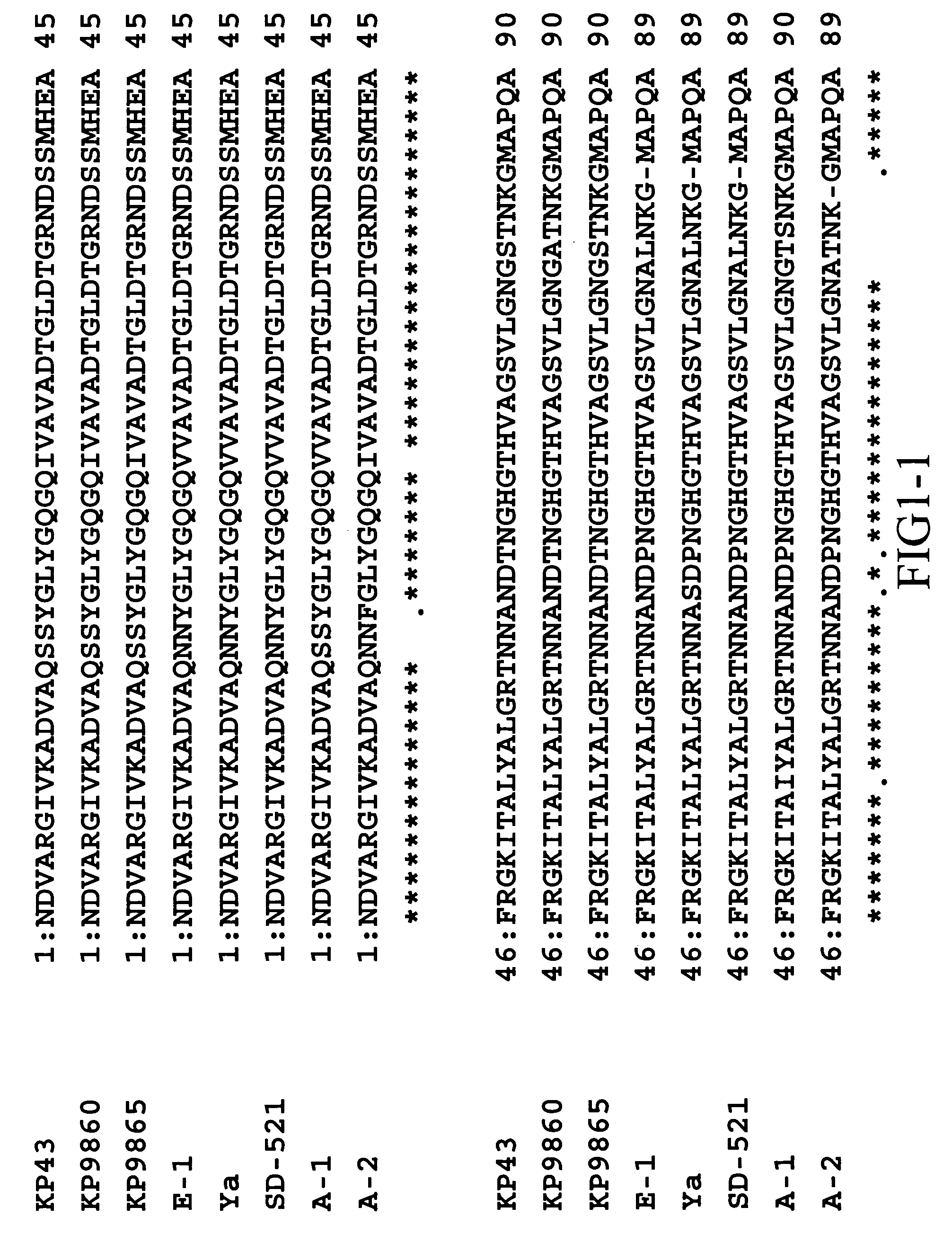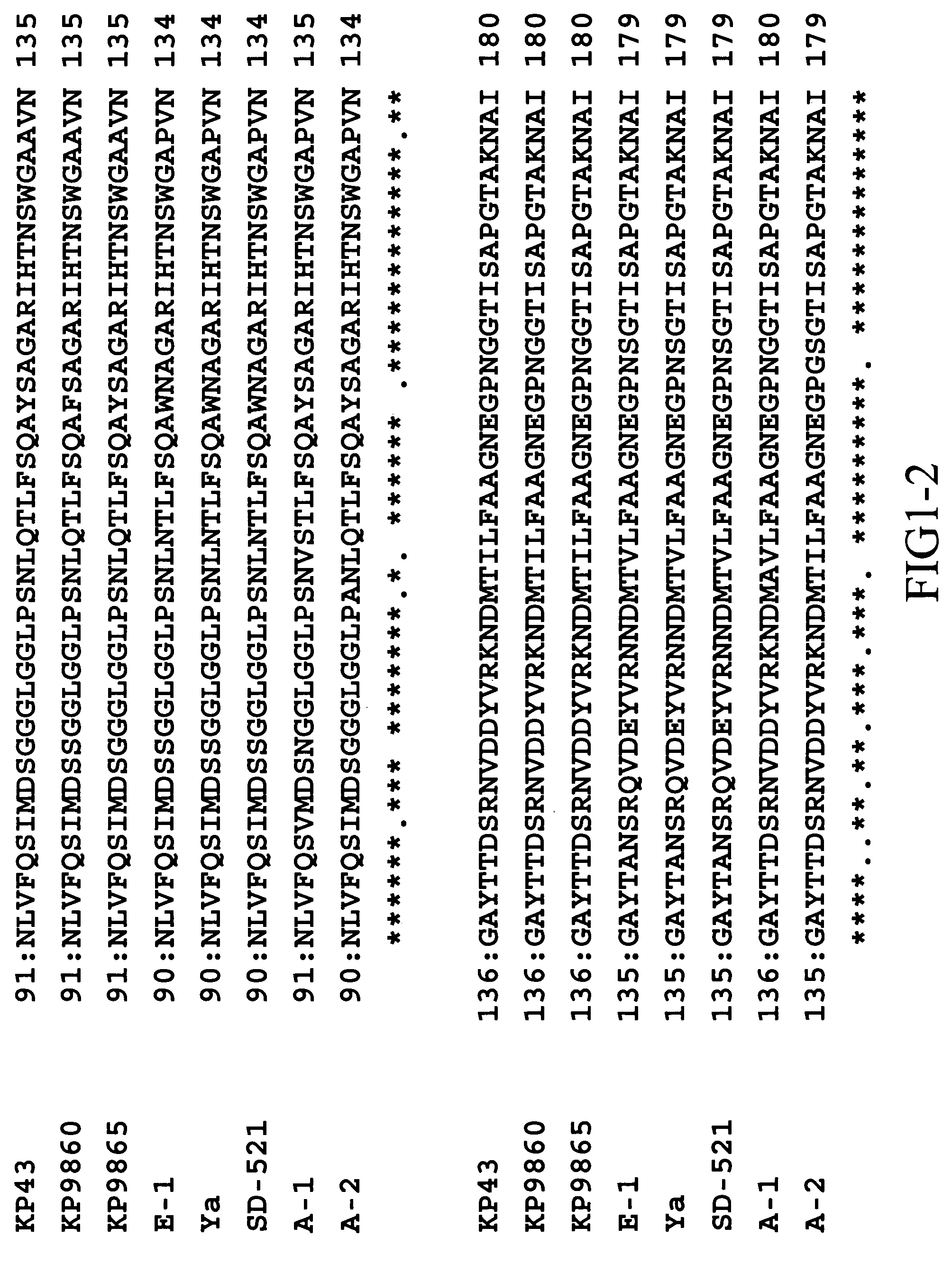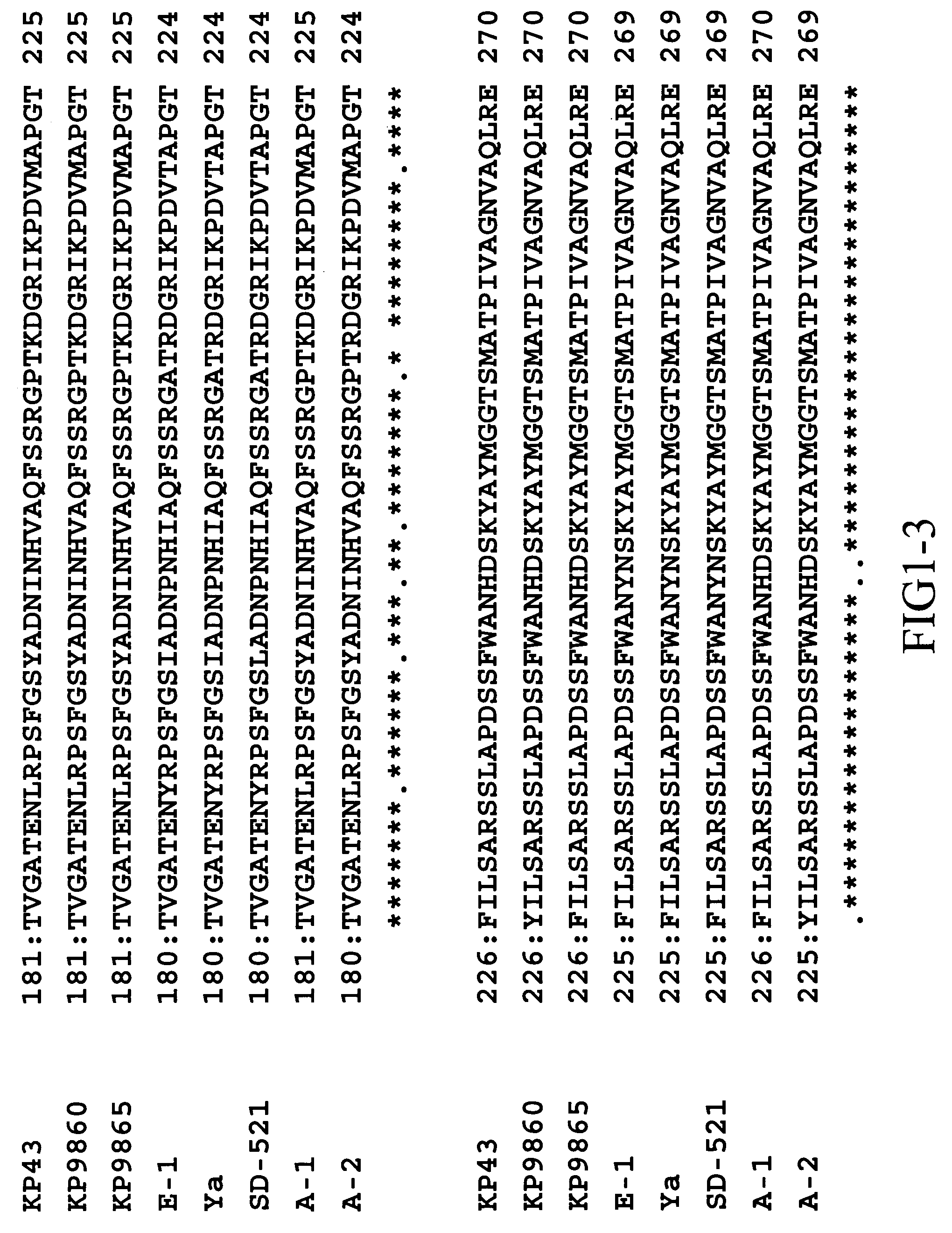Alkaline protease
- Summary
- Abstract
- Description
- Claims
- Application Information
AI Technical Summary
Benefits of technology
Problems solved by technology
Method used
Image
Examples
example 1
[0068]Phe46Leu, Tyr195Gly, and Phe46Leu+Tyr195Gly, which are mutants of an alkaline protease derived from Bacillus sp. KSM-KP43, are all known to be very effective in improving specific activity (Japanese Patent Application Laid-Open (kokai) No. 2002-218989). When these specific activity-improved mutants were treated at 70° C. for 15 minutes, their residual activity was found to drop to as low as 5 to 25%, as contrasted to the residual activity of the parent alkaline protease which maintained 70 to 80% of the activity before treatment. Therefore, each of these mutants was subjected to random mutagenesis of gene for producing a mutant exhibiting improved thermal stability. Briefly, a structural gene of the mutant having a size of about 2 kb was inserted into pKF18k (Takara) so as to serve as a template DNA (30 ng). PCR was performed by use of the thus-prepared template together with Taq polymerase (2.5 U), BcaBEST Sequencing Primer RV-M and BcaBEST Sequencing Primer M13-47 (both are ...
example 2
[0071]The points of mutation that were found to be effective for enhancing thermal stability in Example 1 were individually introduced to protease KP43 of SEQ ID NO: 1, followed by site-directed-mutagenesis for evaluation of thermal stability.
[0072]A template plasmid for mutagenesis was constructed by introducing, into BamHI- and XbaI-cleaved sites of a pKF18K's multicloning site, a gene (SEQ ID NO: 2) coding for protease KP43.
[0073]Takara LA Taq (Takara) was employed in PCR for site-directed mutagenesis. Mutagenesis PCR was carried out by use of a selection primer whose 5′-end had been phosphorylated (20 pmol; included in a Mutan Super Express Km kit), each of primers 1 to 7 (SEQ ID NOs: 4 to 10; primers for mutagenesis; 20 pmol), and a template plasmid (30 ng). Reaction conditions of PCR were as follows. Firstly, the template DNA was denatured at 94° C. for one minute, then 30 cycles of treatment, each cycle consisting of 94° C.×one minute, 55° C.×one minute, and 72° C.×four minut...
example 3
[0077]Each of the culture supernatants was treated at 60 to 80° C. for 10 minutes in 50 mM borate buffer (pH 10.5: with or without 2 mM calcium chloride), 50 mM Tris-HCl buffer (pH 7: with 2 mM calcium chloride), or a 2 mM aqueous calcium chloride solution. The residual activity each of the culture supernatants was determined through the casein method, and the ratio of the residual activity to that before heat treatment was calculated. All the mutants were found to have a higher residual activity ratio as compared with the parent alkaline protease treated under the same conditions, confirming improvement in thermal stability. Some of the results are shown in FIGS. 2 and 3. These figures show the half-life period (period of time elapsed until the residual activity drops to 50% of the initial residual activity) of the proteases maintained at a certain constant temperature. As is clear from FIGS. 2 and 3, each mutant exhibited a half-value period 1.2 to 7 times that of the parent alkal...
PUM
| Property | Measurement | Unit |
|---|---|---|
| pH | aaaaa | aaaaa |
| pH | aaaaa | aaaaa |
| particle size | aaaaa | aaaaa |
Abstract
Description
Claims
Application Information
 Login to View More
Login to View More - R&D
- Intellectual Property
- Life Sciences
- Materials
- Tech Scout
- Unparalleled Data Quality
- Higher Quality Content
- 60% Fewer Hallucinations
Browse by: Latest US Patents, China's latest patents, Technical Efficacy Thesaurus, Application Domain, Technology Topic, Popular Technical Reports.
© 2025 PatSnap. All rights reserved.Legal|Privacy policy|Modern Slavery Act Transparency Statement|Sitemap|About US| Contact US: help@patsnap.com



